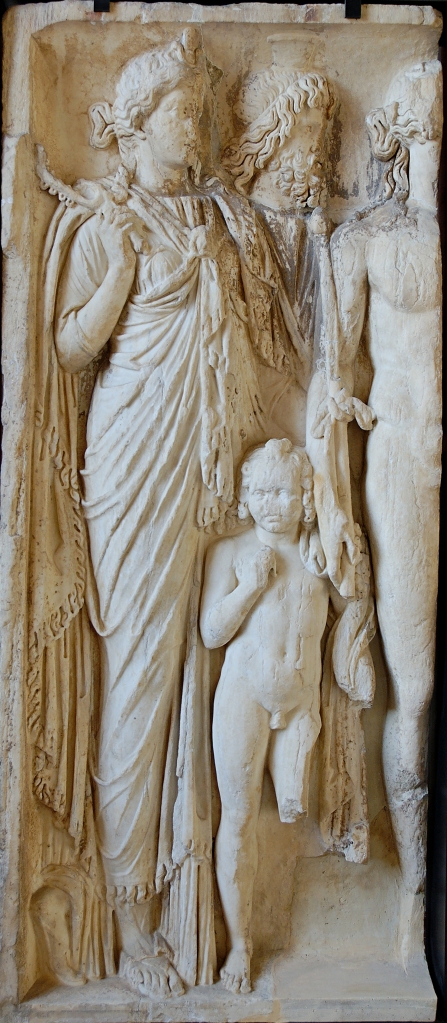June 27-29, 2025 Portland Oregon area
The ritualists for this festival are meeting today at my house for rehearsal. It’s getting REAL and I’m getting excited! If you’re in or near the Pacific Northwest, I hope you’ll join us for our upcoming summer solstice festival for 2025. SunFest 2025 is being put on by Other Worlds of Wonder (OWOW), please visit their website at the link below. I am serving as ritual facilitator—along with a truly wonderful Crewe of ritualists and craftspeople. It is going to be pure magic!
Read all about the festival rites and rituals here:
The Myth of the Wandering Goddess is one of the two most important myths of ancient Egypt. Just about every town or region had its own version of the festival that celebrated this myth. Although different Goddesses were the “Wandering Goddess” in each local area, our festival celebrates the power of Sakhmet and the ecstasy of Hathor.
During SunFest 2025, we’ll explore this important myth in an immersive, participatory way. Each ritual, presentation, or workshop is designed to draw us into the overall myth so that—together—we will live our own version of that myth and celebrate the festival that surrounded it.
SunFest 2025 takes place Friday through Sunday at Camp Cedar Ridge—as we await Ffynnon’s private park status.
Friday
Creating Altars & Invoking Hathor & Sakhmet
Our first ritual act is to create altars for the Goddesses and to invoke Their presence to our festival. You’re invited to bring items to add to the altar. We will create it together as part of the rite. Then, with the altars prepared, we invoke our two festival Goddesses, the Fierce Goddesses of the Solar Eye: Hathor, the Golden One, and Sakhmet, the Powerful One.
Through our desire, through our invocations, through our music, and our moving bodies, we call upon our Goddesses to be present with us during this festival.
Sedj Desherut, the Ritual of Breaking Red Pots
The ancient Egyptian Ritual of Breaking Red Pots was performed to protect against enemies, physical and/or spiritual. Archeologists have found fragments of the pots that had been inscribed with curses against said enemies. In our version, we will join with Sakhmet in Her righteous anger against the injustice in the world and smash our own “red pots.” By expressing our rage, both personal and societal, we begin the Sacred Work of becoming purified and renewed.
At the end of this ritual, the Goddess Sakhmet departs from us and we are now without the powerful protection of our Goddess.
Seducing Sakhmet, Dancing for Her
The Hathoru, sacred enticers of the Goddess Hathor, will help us get the Friday night drumming and dancing going with a calling for the absent Goddess and a chant to seduce Her to return.
Saturday
Workshop: The Myth of the Wandering Goddess
I’ll present a talk and slide show to explain the importance of this myth to ancient Egypt and provide background to help us understand the rituals and activities of the festival.
At the end of the presentation, we’ll have the opportunity to experience the energies of both Sakhmet and Hathor for ourselves.
Sehotep Sakhmet; Pouring Out Red Beer for Her
Five gallons of red beer are being ritually brewed as an offering to Sakhmet, so that we may appease Her wrath and coax Her to return to us. Without our Fierce Goddess, we, like the Sun God Re, are vulnerable. The First Servant of Sakhmet will lead us in a prayer and chant to the Goddess. Then we will pour out the blood-red beer into the fields in hopes that the Goddess will be pleased and made peaceful through it.
Workshop: Creating Offerings
We’ll break into 5 groups, our “villages.” Each village will work together to create an offering for the Returning Goddess—as She has been promised by Thoth, the God of Wisdom, if She agrees to return home.
The Return of the Wandering Goddess; Hathor is in Joy
Wise Thoth has followed the Lioness Goddess to Nubia and has entertained Her with many excellent stories. He has coaxed Her to return home, promising offerings, dancing, and feasting in Her honor.
Join us at the riverbank, our isheru, where the Returning Goddess is renewed in the Deep Primordial Waters. We, like our Goddess, will be purified and renewed as well. By our rites and in these Waters, Red Sakhmet transforms Herself into Turquoise Hathor, the Intoxicating One.
Then we walk together in procession as we make music and throw flower petals in the path of the Returning Goddess—and at each other, if we’re feeling playful. The Goddess’ reed boat stops at each village and we present our offerings to Her.
Community Picnic
We join together in the main meadow to feast with our Community and in honor of our Goddesses, Hathor and Sakhmet, and Thoth.
Blessings of the Seven Hathors
As the sun sets, we are called once more to gather at the Fire Circle. The Goddess will be present in 7 different forms and She will bless us in return for the offerings we created and presented to Her earlier.
There is no formal end to the ritual. We drum and dance our way into the night as we so desire.
Sunday
Pouring Out Pure Milk for Her
This is the closing ritual for the festival. We pour out pure milk in thanks to Sakhmet, Hathor, and Thoth, then ritually release Their Presences by extinguishing our fiery torches in the sacred milk of the Goddess.
The rite also incorporates OWOW’s traditional gift exchange. If you wish to participate, bring a small gift with you as a thanksgiving to be given to someone in our community, and you will receive one in return.
PLUS—Join us for a workshop on magic and protest later on Sunday!
How to Register



















































